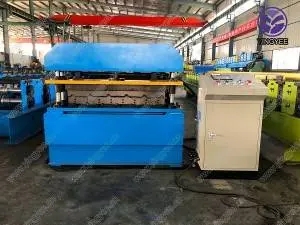
The Evolution and Importance of Cable Tray Manufacturing Machines
In today’s rapidly advancing technological landscape, the role of cable tray manufacturing machines has become crucial in the construction and electrical sectors. These machines are specifically designed to produce cable trays, vital components that support and manage electrical cables in various environments, from commercial buildings to industrial setups. Understanding the manufacturing process and the technology behind these machines sheds light on their importance in maintaining organized, safe, and efficient electrical systems.
What are Cable Trays?
Cable trays are support systems that facilitate the distribution and management of electrical cables and wires. They are crucial for ensuring a safe and organized installation while reducing the likelihood of accidents and damage due to environmental factors. Cable trays come in various designs, including ladder trays, troughs, and solid-bottom trays, and are commonly made from materials like steel, aluminum, or fiberglass.
The Need for Cable Tray Manufacturing Machines
With the increasing demand for efficient cable management systems, the need for specialized manufacturing machines has become evident. Traditional methods of producing cable trays could not meet the rising specifications and volumes demanded by modern construction projects. Cable tray manufacturing machines are engineered to automate the production process, enhancing precision, speed, and overall efficiency.
Components of Cable Tray Manufacturing Machines
Modern cable tray manufacturing machines comprise several sophisticated components that enable them to perform multiple tasks with high accuracy. Key components include
1. Roll Forming Equipment This is the core machinery that shapes metal strips into the desired profile of the cable tray. The roll forming process involves passing metal sheets through a series of rollers that gradually bend and shape the material without any substantial waste.
2. Cutting Machines After the metal has been formed into the tray profile, cutting machines accurately slice the material to the required length. This process is crucial for ensuring that the trays fit perfectly into designated spaces.
3. Welding Systems In instances where sections of cable trays need to be joined, welding systems are employed to ensure durable and robust connections. Automated welding processes significantly enhance productivity and consistency in the manufacturing phase.

4. Surface Treatment Stations To improve durability and resistance to environmental factors, cable trays often undergo surface treatment. This includes processes such as galvanizing, powder coating, or painting to protect against corrosion and wear.
5. Quality Control Systems Throughout the manufacturing process, quality control systems monitor the dimensions and finishes of the trays to ensure they meet industry standards and specifications. This step is essential for maintaining the structural integrity and performance of the cable trays.
Advantages of Automated Manufacturing
The rise of cable tray manufacturing machines has revolutionized the production landscape in several ways
1. Increased Production Speed Automation allows for faster manufacturing cycles, which means that businesses can meet higher demands without compromising quality.
2. Enhanced Precision With automated systems, the likelihood of human error is minimized. Precise measurements and consistent finishes are guaranteed, which are critical for ensuring the safety and reliability of electrical installations.
3. Cost-Effectiveness Although there is an initial investment in automated machines, the long-term savings through reduced labor costs and minimal wasted materials make them economically viable for manufacturers.
4. Sustainability Automated machines can optimize material use, leading to less waste. Additionally, manufacturers can implement environmentally friendly practices, enhancing their sustainability profile.
Conclusion
Cable tray manufacturing machines play a vital role in today’s electrical infrastructure. By providing efficient, precise, and cost-effective solutions for cable management, they enable safe and organized installations that cater to the needs of modern construction and industrial applications. As technology continues to advance, these machines will undoubtedly evolve further, incorporating smarter, more efficient features that align with the growing demands for sustainability and performance in the electrical sector. Such advancements not only emphasize the importance of innovative manufacturing techniques but also highlight the ongoing need for quality and efficiency in all aspects of construction and electrical management.